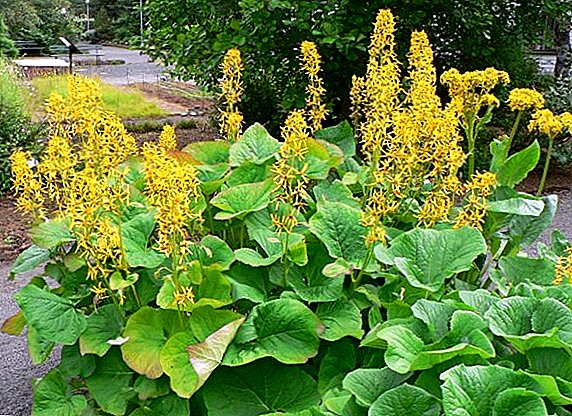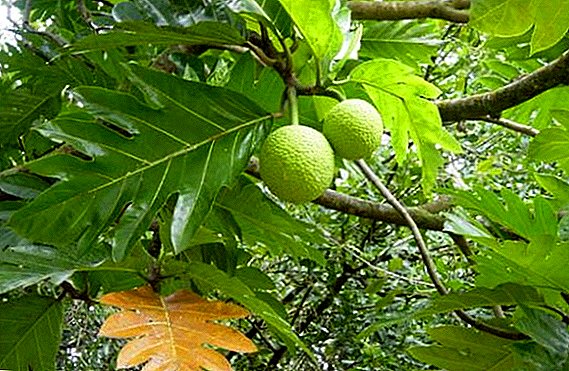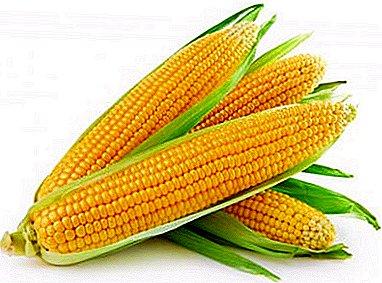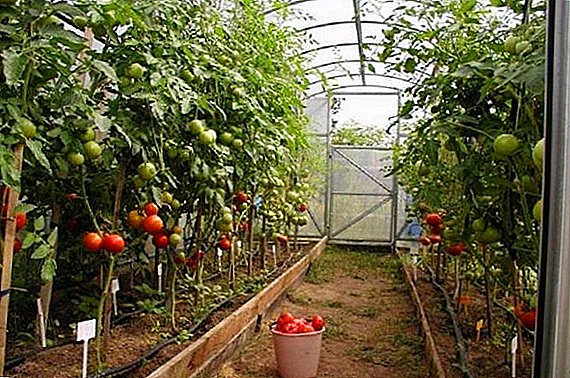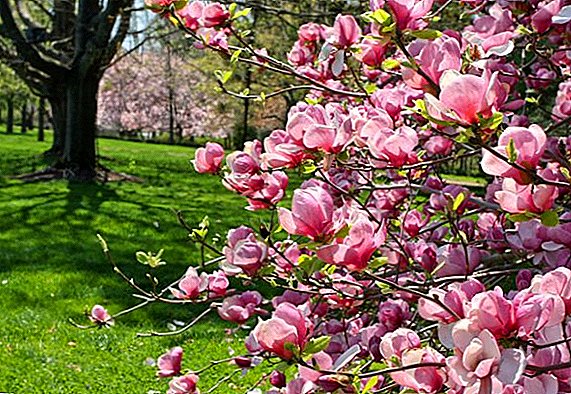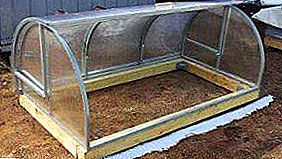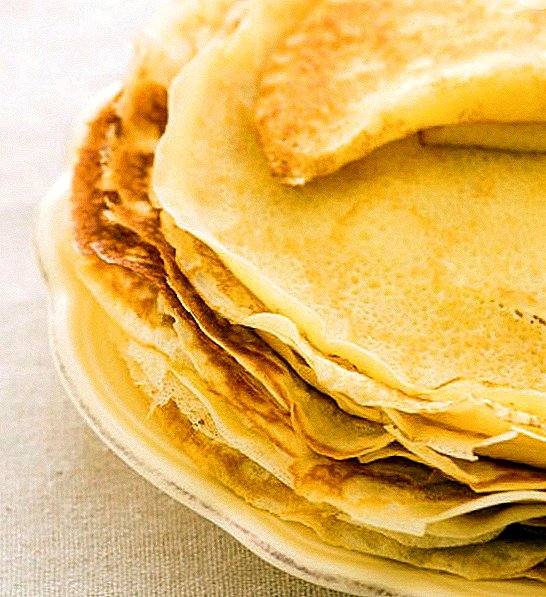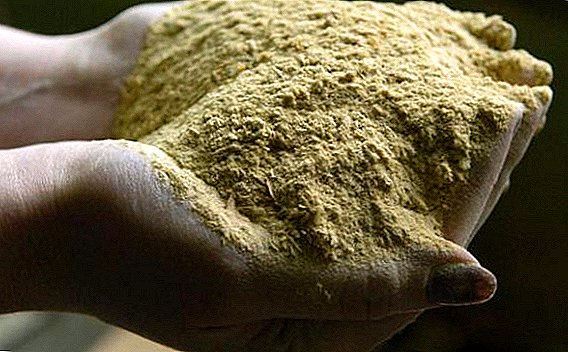 Fertilizer from fish waste is used by gardeners to fertilize various plants and crops. Flour, which is obtained from the waste of bones and soft tissues of crustaceans, fish and marine mammals, is rich in various micro- and macroelements, therefore it is an indispensable helper in the gardens of many summer residents.
Fertilizer from fish waste is used by gardeners to fertilize various plants and crops. Flour, which is obtained from the waste of bones and soft tissues of crustaceans, fish and marine mammals, is rich in various micro- and macroelements, therefore it is an indispensable helper in the gardens of many summer residents.
In this article, we will talk about how fish flour is made, where it is used, how it is applied as a fertilizer - and how to use and preserve them for a long time.
What and how to do
Flour made from bones and soft tissues of fish is made in two ways: coastal and commercial. The first method of manufacturing fish fertilizer is used directly on ships. To do this, they take not the most selective raw fish, as a normal product goes to freeze, and later - to fish processing plants for sale.  Fish that have not been frozen are allowed to be processed to make flour.
Fish that have not been frozen are allowed to be processed to make flour.
Important! Product quality is determined by the amount of raw protein. High-quality flour should contain about 70% protein.Coastal companies for the production of these products are more efficient in terms of the amount of raw materials produced per day.
For such companies, higher quality raw materials are being imported, but opponents of the onshore processing method claim that there are various chemical additives in their products that are not found in the on-board ship.  And partly this is true, because during the production on the ship there simply is not enough time or resources for the manufacture of fish meal with chemical additives.
And partly this is true, because during the production on the ship there simply is not enough time or resources for the manufacture of fish meal with chemical additives.
In any production of fish fertilizers, the following stages of preparation are used: boiling, pressing, drying, grinding. Drying of pressed tissue and fish bones can be done in two different ways: steam and fire.
It will also be useful for you to learn about the use of such organic fertilizers as potato peels, eggshells, banana skins, onion peels, nettles.The second method is more efficient and less energy-intensive for the manufacturer. But a product prepared in this way ultimately loses many of its beneficial qualities, which makes it relatively cheap.
When drying by the steam method, the company spends more resources, and, accordingly, such a product will cost more (and its quality will be better).  Fish fertilizer companies use almost all types of fish and crustaceans, but anchovies, herring, sardines, pollock and shad are the most preferred.
Fish fertilizer companies use almost all types of fish and crustaceans, but anchovies, herring, sardines, pollock and shad are the most preferred.
The production of fish meal is established in many countries that have access to the sea or ocean. Depending on what type of fish predominantly lives in a particular zone, the properties and quality of the flour will differ.
Did you know? Every year, more than 5 million tons of fish meal are produced in the world.For example, Chile and Peru make fish fertilizer mainly from cox reds and anchovies, while Japanese products consist of sardine bones.
 Peru is considered the world leader in the production of flour-based fertilizer from fish. However, there is one thing here: the total annual amount of fish caught by this country is less than the amount of finished flour products.
Peru is considered the world leader in the production of flour-based fertilizer from fish. However, there is one thing here: the total annual amount of fish caught by this country is less than the amount of finished flour products.Conclusion: Peruvian companies use chemical additives. Mauritania is the second country in the number of annual production of fish fertilizers. Produce flour in this country from different varieties of fish, and the amount of protein in the composition can vary from 62 to 67%.
Where used
The flour mass of fish bones and tissues has found its application in various areas of agricultural activity. The use of fish meal as a fertilizer for vegetables helps to increase the amount of the crop and improve its quality.  Many gardeners use this source of phosphorus minerals to feed tomatoes, potatoes, eggplants, etc.
Many gardeners use this source of phosphorus minerals to feed tomatoes, potatoes, eggplants, etc.
In addition, fish meal is used:
- in fisheries;
- in poultry farming (increases the resistance of birds to various diseases, improves the absorption of food, increases fertility, improves the nutritional characteristics of eggs, etc.);
- in pig breeding (improves the composition of meat fats, accelerates growth and increases resistance to diseases);
- on cow farms (increases the total amount of milk produced, improves the quality of dairy products, accelerates the growth of the animal).

Composition
The main part of fish meal (about 65%) is protein. The amount of fats and ashes, depending on the manufacturer, is almost the same (12-15%), some polyunsaturated fatty acids make up about 8%, all the rest is lysine.
The product contains many essential amino acids, fatty acids, vitamins, minerals, micro and macro elements.
Important! During long-term storage of fish meal, it accumulates nitrogen-containing and ammonia compounds, which can cause poisoning of animals.
Lysine, methionine, tryptophan and threonine are a number of amino acids. Among the vitamin substances, the largest amount in the composition is vitamin D, vitamin A and vitamins of group B.  The main mineral substances that make up a high-quality fish product are: calcium, phosphorus and iron.
The main mineral substances that make up a high-quality fish product are: calcium, phosphorus and iron.
In addition, it is worth noting that the finished product contains up to 10% moisture and only 2% raw fiber.
How to make organic fertilizer
Processed fish is used as fertilizer for the vegetable garden after harvesting. Flour just scattered around the site, then everything is dug over.
Learn more about organic fertilizers.Phosphorus, iron and calcium can be stored in the soil for a long time, so they will become indispensable macroelements for vegetable crops that will be planted in the spring.
But this fertilizer can also be applied to each plant. 
This is done in different ways, depending on the type of culture:
- Potatoes. Fertilize this culture by pouring powder under each bush. Per square meter, use no more than 100 grams of fertilizer.
- Tomatoes In this case, fish meal should be used in the process of planting seedlings. Under each bush tomato must put 20-40 grams of fertilizer.
- Fruit trees. Apple, pear or plum should be fed 3 times a year. If the tree is more than 5 years old, then about 200 g of fish powder can be poured under the root.
- Berry bushes. At 1m ² of berry bushes plantation you need to make 100 g of flour, preferably in early spring. In case of transplanting of bushes - add 50 g of fertilizer to the hole under each bush.
- Bulb flower cultures. Fertilized in the spring at the rate of 50 g flour per square meter of soil.
 The use of bone meal in horticulture should occur only in cases of lack of phosphorus and calcium in the soil.
The use of bone meal in horticulture should occur only in cases of lack of phosphorus and calcium in the soil.Therefore, before you apply fertilizer, find out the composition of your soil.
If it has a normal amount of these macronutrients, then fertilizing it is contraindicated, otherwise the quality and quantity of the crop will not improve, but will have the opposite effect.
Storage conditions
There are two main types of flour: fat (about 22% fat) and non-fat (about 10%). Depending on the type, temperature and humidity during storage, the product will change in chemical composition (in a negative direction) during prolonged and improper storage.  Scientists have conducted combined studies that showed how each type of flour will vary with a particular storage method.
Scientists have conducted combined studies that showed how each type of flour will vary with a particular storage method.
Did you know? Peruvian anchovy is the most commonly used type of fish for making flour fertilizers.If you save fish powder (both fat and non-fat) for 30 days at normal humidity (8-14%) and an ambient temperature of 20 ° C, the amount of water-soluble protein and crude protein will decrease by 8-12%.
Moreover, the longer to store such products, the greater the loss in the form of proteins and protein. In addition, over time, an increase in the amount of ammonia is observed.
If you keep products at negative temperatures, then the loss of protein and protein will be reduced to a minimum, but the resistance of the powder will be significantly reduced.  Oily flour undergoes oxidation of raw fat during long-term storage, and this is one of the main reasons for the loss of product quality. And in just one month the amount of raw fat is reduced by 30-40%!
Oily flour undergoes oxidation of raw fat during long-term storage, and this is one of the main reasons for the loss of product quality. And in just one month the amount of raw fat is reduced by 30-40%!
With increased humidity and air temperature, there is a significant decrease in vitamins of groups B and PP as part of fertilizer.
As shown by research data, at high humidity and air temperature, the substances that make up the flour break down or react with each other, and as a result, the by-products of the reactions are released: peroxide compounds, free fatty acids and ammonia.  These by-products are made from fertilizer "enemy" for plants, so long-term storage of fish meal is not recommended. Scientists in the course of research have found that these products will deteriorate in terms of chemical composition for any type of storage, but the least loss in quality will be when storing flour in a room with a negative temperature and low air humidity (less than 10%).
These by-products are made from fertilizer "enemy" for plants, so long-term storage of fish meal is not recommended. Scientists in the course of research have found that these products will deteriorate in terms of chemical composition for any type of storage, but the least loss in quality will be when storing flour in a room with a negative temperature and low air humidity (less than 10%).



